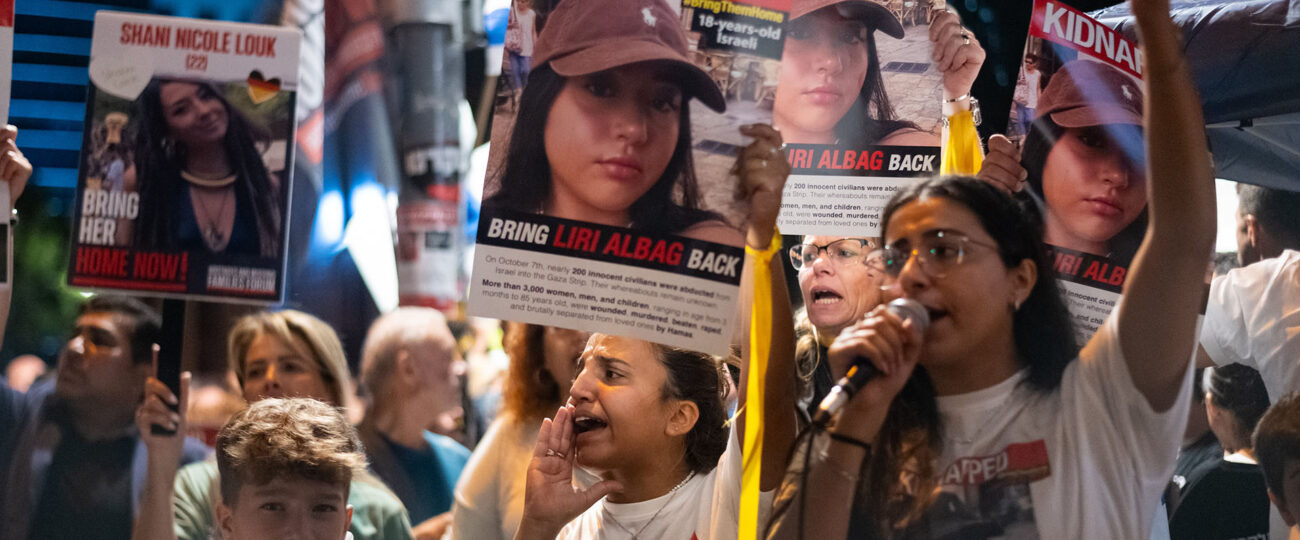As rockets fly across the Middle East and the Israeli-Palestinian conflict lengthens into 2024, one might forget to consider the many internal conflicts both parties face politically within their respective public and government. No matter how influential a prime minister or military commander may seem, it is the backing of everyday citizens party lawmakers and cabinet members who maintain the power of these figureheads, especially in war.
Recently, Israel’s public and government leadership have shown greater internal conflict regarding what strategies to take next in the war, specifically focusing on either hostage release or destruction of the Islamic terrorist group Hamas. This instability may signal what is to come in the following weeks or months of the war, as unity of opinion and support of government leaders is critical in maintaining dominance in combat. Internal vulnerabilities caused by public distrust over Prime Minister Benjamin Netanyahu and general war strategies, as well as war cabinet and party-based conflicts present a different image of the nation than what its military defenses might show.
After 16 years of serving as Israel’s Prime Minister, a recent Times piece by Dahlia Scheindlin suggests that Netanyahu’s response to the conflict might result in his undoing. Scheindlin notes his “collapsing support” in a recent poll which showed that more than 70% of Israelis desire the minister to resign, the majority of which placing some or all of the responsibility for the Oct. 7 attacks on Netanyahu’s inaction. According to Scheindlin, “The Israeli public has so far shown no indication of forgiving him [Netanyahu].”
Politico writer Jamie Dettmer additionally found Netanyahu to be “entrapped” politically, questioning whether his delay of decision making in regards to the current hostage crisis and offensive strategies will withstand the force of public opinion on Israel. Dettmer also found that the minister’s own lawmakers had difficulty deciphering his language and lack of clarity on his plans to “destroy Hamas”, reminiscent of the United States’ prior “War on Terror” spearheaded by George W. Bush and its obscurity in enactment.
General public opinion in Israel over the conflict was outlined by a Jan. 14-17 poll of approximately 600 Israelis in The Times of Israel. A majority of those polled (53%) expressed dissatisfaction with the county’s war cabinet, many asking for a probe looking into why the Oct.7 attacks were not properly prevented. 26% desired an immediate investigation into the attack, although the cabinet currently plans to wait until fighting has subsided to probe the incident.
A major point of contention for Israelis today is the need for a hostage release deal (and possible ceasefire) with Hamas fighters.
This issue has compelled many Israelis to protest in the street, as Scheindlin reports, “In recent weeks, anti-government demonstrations have even returned to Tel Aviv, a growing sideshow to the larger protests demanding that the government do more to get Israel’s hostages released.”
From a border viewpoint, polls do show internal optimism towards Israeli military efforts with 83% if citizens polled agreeing that “the public is standing up well to the war.” Another poll reported on by NBC News editor Chantal De Silva depicted the same support, as “66% said they don’t think the military should reduce heavy bombing of populous areas in Gaza.”
Within Israel’s war cabinet, which consists of Benjamin Netanyahu, Yoav Gallant and Benny Gantz, as well as observers Gadi Eisenknot and Ron Dermer, reporters have picked up on tension between the strategists.
This infighting is indicative of the future strength of Netanyahu’s leadership and war aims, and will impact how the group is publicly perceived.
Again, decisions on whether to focus on hostage release or offensive fighting has struck a divide between the group, with Eisenknot and Gantz leaning towards prioritization of releasing Israeli hostages through diplomatic means, according to De Silva.
The prime minister instead finds the pure elimination of Hamas to be a preliminary for hostage release.
Dettmer highlighted these divisions, writing “Eisenkot [ . . .] also appeared to criticize Netanyahu’s management of the war with Hamas, suggesting the Israeli leadership is not telling the truth about the conflict.” The apparent dissonance between calls for destruction and solid objectives for doing so within the cabinet have led some, including Eisenknot, to speculate whether the war should be thought of in terms of absolute defeat.
The realism which calls for a ceasefire required from Israeli politicians, particularly when idealogical concessions must be made, is a recipe for political dissent and disunity.
Cabinet divides are quite clear in Israel partly due to its cross-party make-up, with Netanyahu and Gallant representing Likud, Gantz representing National Unity and Eisenknot representing the Israel Resilience Party. Netanyahu’s Likud base is often accused of influencing his decisions on the war cabinet, seeking to retain party support as their prominence slips.
Recent polls, as identified by Scheindlin, reflect this declining trend in support. Likud, the majority party, is expected to hold “just 17-20 seats” out of 120 in the Israeli parliament. Further research by Dettmer elaborates, “opinion polls [suggest] Likud has lost a third of its electoral support since October 7.”
Some prominent Likud members, such as Danny Danon, advocate for a more aggressive military approach, criticizing Netanyahu’s timidity. As Politico explains, “the party currently rejects a two-state solution, and expects their prime minister to do the same.
Maintaining a balance between general public support, satisfaction of Likud party aims and international symathies has left the prime minister in a delicate situation.
Along with organizing war objectives, Dettmer notes that “Netanyahu is more and more focusing on trying to tamp down internal party dissent.” It is yet to be known whether one motivation will compromise another.




